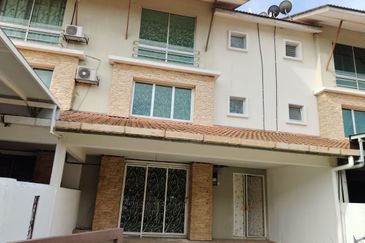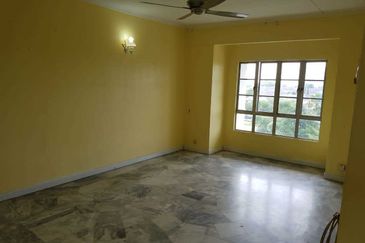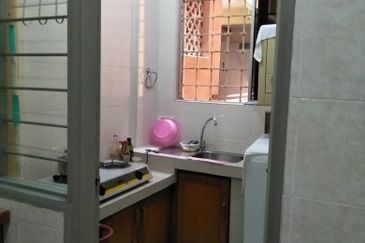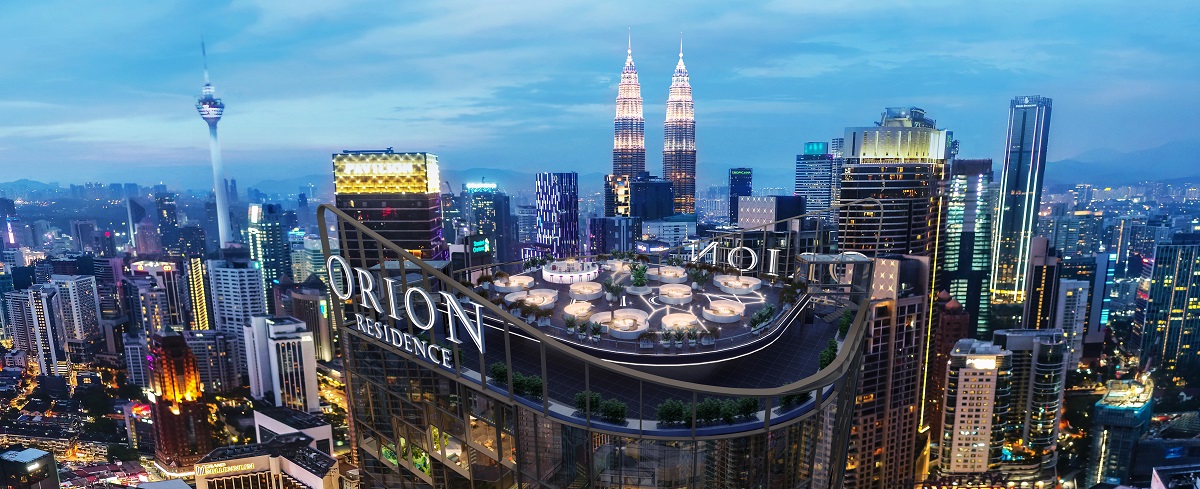The high intensity of human activity in cities around the world, brought about by rising urbanisation, spells a world that’s becoming increasingly unsustainable. Rising energy consumption, traffic congestion, uncontrollable urban sprawl, poverty and the deterioration of old neighbourhoods are some of the effects of urbanisation that — if not addressed — will affect the continued sustainable growth of a country. To address these challenges, local authorities and governments are increasingly turning to urban regeneration or urban renewal.
Urban regeneration is not something new and can be traced back to the earliest days of urban development, and the process has had an impact on many urban landscapes around the world, such as New York City, Chicago, London, Beijing and Melbourne, just to name a few. While the term urban regeneration has several connotations — the destruction of old buildings to make way for the new, improving the infrastructure of an old area, or rehabilitating old buildings for new uses — urban planners say it basically means a land redevelopment programme to enhance areas of less economic use, that are in need of infrastructure and amenities, that are dilapidated and abandoned.
“It began as a housing reform and measures included improving public health and sanitation, squatter relocation and relocation of large industrial sites from congested areas in the city,” says Malaysian Institute of Planners president Norliza Hashim.
She points out that if done properly, urban regeneration can provide a city the opportunity to reclaim quality urban spaces. “This includes providing the city with larger green areas, better infrastructure and amenities and better quality buildings. Urban regeneration also means developing brownfield instead of greenfield sites. This would maximise the use of existing city resources and avoid urban sprawl by building within the city’s urban fabric. This is a more sustainable use of the city’s land. It also encourages inner city living that is important for a city to remain vibrant and safe,” says Norliza.
Persatuan Arkitek Malaysia immediate past president Dr Tan Loke Mun agrees, pointing out that urban regeneration can prevent old urban neighbourhoods and their communities from falling into disrepair and social decline. “Case studies have shown that many old city areas that were neglected in the US became slums and in the end, cost the government and society more to maintain them,” says Tan who is also director of ArchiCentre Sdn Bhd.
He points out that urban regeneration in the US has brought back life to the old city areas. “New places and tourist attractions have even blossomed from them. Old neighbourhoods don’t just deteriorate and go away. They can, through upgrade and renewal, keep adding wealth to the city,” adds Tan.
Urban planner Ahmad Jefri Clyde also agrees that the process of urban regeneration can help alleviate blight. “Indeed, these are the tools available to policymakers to solve the problems of blight that are often accompanied by crime and social problems,” says Jefri, who is director of AJC Planning Consultants Sdn Bhd.
The debate rages on
Urban regeneration is not without criticism, one of them being that the process often involves the demolition of historical structures and the relocation of people. Norliza accepts this as a fair and most often true criticism. “One of the most critical issues is the relocation of people… this should not happen in the true spirit of urban revitalisation,” she says.
Norliza personally feels that instead of displacing the existing community, they should be relocated to the same site following the regeneration process. “Displacement will not only disrupt their daily lives but also, very often, destroy the strong sense of community,” she says.
Tan says that when undertaking urban regeneration, old and historical buildings should be clearly identified and protected. “We have the laws for it and, hopefully, the heart and muscle to do it. True urban regeneration seeks to use or enhance the story of the place,” he says, pointing out that most astute developers will want to preserve historical structures.
One possible outcome of urban regeneration that can be controversial is gentrification. This was the case in the London Docklands development; by encouraging the development of attractive waterside apartments along the River Thames and the old docks, the London Docklands Development Corp — the agency set up to regenerate the 22 sq km area in east London — brought new, middle-class residents into the area, followed by shops and food and beverage outlets. Although the redevelopment brought many benefits to the area, there were some groups who opposed the changes, including some of the original inhabitants who are now unable to afford to live there.
“This is always the fear of opponents to urban regeneration as gentrification causes higher-income communities to move in and create increases in property values,” says Norliza, adding that this naturally causes the lower-income community to be priced out.
Undoubtedly, the impact of urban regeneration on the actual revitalisation has been a subject of intense debate over the years. Nonetheless, proponents of urban regeneration believe this process is important for the continued sustainable growth of a country.
Indeed, there are many urban regeneration success stories. Norliza points to Vancouver, Canada, where urban regeneration has been undertaken in its inner city areas. In one particular area, False Creek, the regeneration of this former railway and industrial area has given the city much more than what it had before. “It now has a great amount of green areas and parks (20% of the total False Creek area of 204 acres) that are accessible to city dwellers, a vibrant waterfront and public housing (constituting 20% of the total housing in the area),” she says.
In Shanghai, China, the area called Xintiandi is another example of how an area can be regenerated but at the same time retain its traditional buildings and character. Instead of merely preserving the old buildings, the rationale was to create a vibrant area. Lauding the regeneration effort, Norliza says by combining conservation efforts with urban redevelopment efforts (with the addition of new high-rises at the periphery), the area has been given a new lease of life.
In Hong Kong, chartered surveyor David Tse points to Langham Place, in the heart of the old Mongkok area. The managing director of LT Properties Ltd and LT Management Services Ltd, and immediate past chairman of the Royal Institution of Chartered Surveyors (RICS) Hong Kong, says that through a joint venture between the Urban Renewal Authority (URA) of Hong Kong and a private developer, what was once a red-light district is today a thriving commercial and retail address.
Revitalising old spaces
For Malaysia, Tan feels there are factors that are in favour of urban regeneration, including the large old existing building stock that can be reused and revitalised. “There is also the need to reduce urban sprawl, unless it is planned with public transport lines, because this stretches and increases the use of energy and infrastructure to accommodate small populations,” he says.
Given the possibilities for urban regeneration and its importance, are local authorities supportive of such plans? Norliza believes they are, especially city municipalities such as Kuala Lumpur, Penang, Melaka and Johor Baru. “I also believe they should be because land is scarce in these cities and to ensure that inner cities remain sustainable, its urban-built environment must provide for a comfortable and safe living environment, its business and commerce remain vibrant and provide job opportunities for the local communities, and its green areas remain protected,” she says.
In Kuala Lumpur, this is a reality the Kuala Lumpur City Hall (DBKL) recognises and as a result, it says it is taking the lead to facilitate the development of brownfield sites. In an interview with City & Country earlier this year, KL mayor Datuk Ahmad Fuad Ismail said the city, already saturated with new developments, cannot afford to encroach on greenfield sites. He added that City Hall has identified 35 potential sites for urban renewal — mostly privately owned land in the heart of the city, comprising a total of 547.92 ha.
Majlis Perbandaran Subang Jaya (MPSJ) president Datuk Adnan Md Ikshan says its urban development policy gives priority for brownfield and infill developments within urban areas. Infill development refers to the use of land within an existing built-up area for further construction. He adds that MPSJ encourages renewal projects, mainly in the relocation of squatters and the building of infrastructure and public amenities.
Ahmad Fuad also pointed out that urban regeneration offers opportunities for property developers. And such opportunities have not been overlooked either. The Sentul redevelopment project in KL, for example, aims to rejuvenate an older part of the city. For developers, redevelopment makes economic sense despite the cost of demolishing and loss of income stream generated from old properties.
Sime Darby Property Bhd points to its experience in brownfield developments in Singapore. The Orion, for example, was originally an old serviced apartment with low building efficiency. “The yield was not attractive. Upon redevelopment, we now have a 27-storey high-end condominium with 46 luxurious units,” says Sime Darby Property managing director Datuk Tunku Putra Badlishah Tunku Annuar, adding that the returns on investment was 63%.
Similarly, in the redevelopment of the Petro Centre and the Sime Darby Enterprise Centre, what were once old factories have been turned into high-rise, modern light industrial buildings. The redevelopment allowed Sime Darby to achieve higher returns on investment and rental yields, by 36% and 12% respectively.
Challenges and limitations exist
Benefits and opportunities aside, those familiar with the issue of urban regeneration concede that challenges and limitations exist. For one, not all urban renewal projects are financially viable. In Hong Kong, for example, the rule of assessing compensation for affected owners is based on a seven-year-old comparable building in the same locality. Tse says this has greatly increased purchase costs, making it less likely for private developers to participate in urban regeneration projects.
“As property in Hong Kong is usually in multi-ownerships, it is also difficult to successfully purchase all the private lots or buildings,” adds Tse.
Such a setback exists in Malaysia, Tan concurs. “Renewal of neighbourhoods often involves many different land owners, tenants, stakeholders… this makes it difficult to create and push for an integrated overall upgrade,” he says.
Planning rules would also need to be changed and incentives offered to facilitate the reuse of old buildings. Pointing to parking requirements, for instance, he says these will need to be waived should someone want to convert an old row of shophouses into a boutique hotel as there is no way car parks can be provided. “Inflexible planning rules often hinder urban renewal. The rules should facilitate sustained growth and renewal rather than just be a set of rules for people to follow,” adds Tan.
Tunku Putra Badlishah agrees. “Local authorities need to have a more open mindset as existing bylaws can be restrictive,” he says.
The way forward
A possible way forward is the creation of an agency to take the lead in urban regeneration projects. In Hong Kong, Tse points to the Urban Renewal Authority (URA). Formed in 2001 under the URA Ordinance, with the mission to address the problem of urban decay and to improve the living conditions of residents in dilapidated areas, URA has to follow guidelines set down by the Urban Renewal Strategy (URS) issued by the then Secretary for Land and Works (now Development Bureau of the HKSAR government).
 As at 2001, Tse says URA has been tasked with implementing 225 urban renewal projects in 20 years. These 225 projects are mainly located in nine target areas in Hong Kong Island and Kowloon Peninsula, and were chosen due to the large number of buildings that are over 30 years old.
As at 2001, Tse says URA has been tasked with implementing 225 urban renewal projects in 20 years. These 225 projects are mainly located in nine target areas in Hong Kong Island and Kowloon Peninsula, and were chosen due to the large number of buildings that are over 30 years old.
“URS sets outs the 4R concepts — redevelopment, rehabilitation, revitalisation and preservation — when undertaking urban renewal projects as well as the various parameters and approaches,” he says. These include public consultations, undertaking social impact and/or environmental impact assessments, rehousing, and compensation guidelines for affected occupiers and property or landowners.
Would such an agency like Hong Kong’s URA or Singapore’s Urban Redevelopment Authority be something for Malaysia to consider? Norliza believes so. She stresses that such an agency would have to be formed through legislation and have the authority to identify areas for regeneration, draw up redevelopment or regeneration plans as well as coordinate with the various parties and stakeholders, including addressing concerns raised by the public, to bring the plans to fruition.
She believes that engaging the people and giving them more than what was there previously is a critical aspect of ensuring not only the success of urban regeneration but also to ensure that it is a process that is sustainable.
Indeed, involving the public in the process of urban planning and development was one of the recommendations made by experts in the field of sustainable urgan regeneration at a series of lectures organised by the EU Public Affairs team of the RICS between March and June 2008. The other recommendations are to develop and regenerate by means of deliberate construction to ensure legitimacy and acceptance, develop and implement a sustainable cost-benefit analysis, and develop a single, coherent policy to offer clear incentives for sustainable urban regeneration.
The RICS concluded that communication is vital. In a research paper, RICS said: “Although building relationships is a long-term exercise, communication among residents and professionals will result in trust, and that will contribute to increased community cohesion. Without the community, there is nothing and without community cohesion, urban regeneration will most likely fail. Therefore, discussions on regeneration should always revolve around use and people.”
This article appeared in City & Country, the property pullout of The Edge Malaysia, Issue 760, June 22 - 28, 2009.
Urban regeneration is not something new and can be traced back to the earliest days of urban development, and the process has had an impact on many urban landscapes around the world, such as New York City, Chicago, London, Beijing and Melbourne, just to name a few. While the term urban regeneration has several connotations — the destruction of old buildings to make way for the new, improving the infrastructure of an old area, or rehabilitating old buildings for new uses — urban planners say it basically means a land redevelopment programme to enhance areas of less economic use, that are in need of infrastructure and amenities, that are dilapidated and abandoned.
“It began as a housing reform and measures included improving public health and sanitation, squatter relocation and relocation of large industrial sites from congested areas in the city,” says Malaysian Institute of Planners president Norliza Hashim.
She points out that if done properly, urban regeneration can provide a city the opportunity to reclaim quality urban spaces. “This includes providing the city with larger green areas, better infrastructure and amenities and better quality buildings. Urban regeneration also means developing brownfield instead of greenfield sites. This would maximise the use of existing city resources and avoid urban sprawl by building within the city’s urban fabric. This is a more sustainable use of the city’s land. It also encourages inner city living that is important for a city to remain vibrant and safe,” says Norliza.
Persatuan Arkitek Malaysia immediate past president Dr Tan Loke Mun agrees, pointing out that urban regeneration can prevent old urban neighbourhoods and their communities from falling into disrepair and social decline. “Case studies have shown that many old city areas that were neglected in the US became slums and in the end, cost the government and society more to maintain them,” says Tan who is also director of ArchiCentre Sdn Bhd.
He points out that urban regeneration in the US has brought back life to the old city areas. “New places and tourist attractions have even blossomed from them. Old neighbourhoods don’t just deteriorate and go away. They can, through upgrade and renewal, keep adding wealth to the city,” adds Tan.
Urban planner Ahmad Jefri Clyde also agrees that the process of urban regeneration can help alleviate blight. “Indeed, these are the tools available to policymakers to solve the problems of blight that are often accompanied by crime and social problems,” says Jefri, who is director of AJC Planning Consultants Sdn Bhd.
The debate rages on

Urban regeneration is not without criticism, one of them being that the process often involves the demolition of historical structures and the relocation of people. Norliza accepts this as a fair and most often true criticism. “One of the most critical issues is the relocation of people… this should not happen in the true spirit of urban revitalisation,” she says.
Norliza personally feels that instead of displacing the existing community, they should be relocated to the same site following the regeneration process. “Displacement will not only disrupt their daily lives but also, very often, destroy the strong sense of community,” she says.
Tan says that when undertaking urban regeneration, old and historical buildings should be clearly identified and protected. “We have the laws for it and, hopefully, the heart and muscle to do it. True urban regeneration seeks to use or enhance the story of the place,” he says, pointing out that most astute developers will want to preserve historical structures.
One possible outcome of urban regeneration that can be controversial is gentrification. This was the case in the London Docklands development; by encouraging the development of attractive waterside apartments along the River Thames and the old docks, the London Docklands Development Corp — the agency set up to regenerate the 22 sq km area in east London — brought new, middle-class residents into the area, followed by shops and food and beverage outlets. Although the redevelopment brought many benefits to the area, there were some groups who opposed the changes, including some of the original inhabitants who are now unable to afford to live there.
“This is always the fear of opponents to urban regeneration as gentrification causes higher-income communities to move in and create increases in property values,” says Norliza, adding that this naturally causes the lower-income community to be priced out.
Undoubtedly, the impact of urban regeneration on the actual revitalisation has been a subject of intense debate over the years. Nonetheless, proponents of urban regeneration believe this process is important for the continued sustainable growth of a country.
Indeed, there are many urban regeneration success stories. Norliza points to Vancouver, Canada, where urban regeneration has been undertaken in its inner city areas. In one particular area, False Creek, the regeneration of this former railway and industrial area has given the city much more than what it had before. “It now has a great amount of green areas and parks (20% of the total False Creek area of 204 acres) that are accessible to city dwellers, a vibrant waterfront and public housing (constituting 20% of the total housing in the area),” she says.
In Shanghai, China, the area called Xintiandi is another example of how an area can be regenerated but at the same time retain its traditional buildings and character. Instead of merely preserving the old buildings, the rationale was to create a vibrant area. Lauding the regeneration effort, Norliza says by combining conservation efforts with urban redevelopment efforts (with the addition of new high-rises at the periphery), the area has been given a new lease of life.
In Hong Kong, chartered surveyor David Tse points to Langham Place, in the heart of the old Mongkok area. The managing director of LT Properties Ltd and LT Management Services Ltd, and immediate past chairman of the Royal Institution of Chartered Surveyors (RICS) Hong Kong, says that through a joint venture between the Urban Renewal Authority (URA) of Hong Kong and a private developer, what was once a red-light district is today a thriving commercial and retail address.
Revitalising old spaces

For Malaysia, Tan feels there are factors that are in favour of urban regeneration, including the large old existing building stock that can be reused and revitalised. “There is also the need to reduce urban sprawl, unless it is planned with public transport lines, because this stretches and increases the use of energy and infrastructure to accommodate small populations,” he says.
Given the possibilities for urban regeneration and its importance, are local authorities supportive of such plans? Norliza believes they are, especially city municipalities such as Kuala Lumpur, Penang, Melaka and Johor Baru. “I also believe they should be because land is scarce in these cities and to ensure that inner cities remain sustainable, its urban-built environment must provide for a comfortable and safe living environment, its business and commerce remain vibrant and provide job opportunities for the local communities, and its green areas remain protected,” she says.
In Kuala Lumpur, this is a reality the Kuala Lumpur City Hall (DBKL) recognises and as a result, it says it is taking the lead to facilitate the development of brownfield sites. In an interview with City & Country earlier this year, KL mayor Datuk Ahmad Fuad Ismail said the city, already saturated with new developments, cannot afford to encroach on greenfield sites. He added that City Hall has identified 35 potential sites for urban renewal — mostly privately owned land in the heart of the city, comprising a total of 547.92 ha.
Majlis Perbandaran Subang Jaya (MPSJ) president Datuk Adnan Md Ikshan says its urban development policy gives priority for brownfield and infill developments within urban areas. Infill development refers to the use of land within an existing built-up area for further construction. He adds that MPSJ encourages renewal projects, mainly in the relocation of squatters and the building of infrastructure and public amenities.
Ahmad Fuad also pointed out that urban regeneration offers opportunities for property developers. And such opportunities have not been overlooked either. The Sentul redevelopment project in KL, for example, aims to rejuvenate an older part of the city. For developers, redevelopment makes economic sense despite the cost of demolishing and loss of income stream generated from old properties.
Sime Darby Property Bhd points to its experience in brownfield developments in Singapore. The Orion, for example, was originally an old serviced apartment with low building efficiency. “The yield was not attractive. Upon redevelopment, we now have a 27-storey high-end condominium with 46 luxurious units,” says Sime Darby Property managing director Datuk Tunku Putra Badlishah Tunku Annuar, adding that the returns on investment was 63%.
Similarly, in the redevelopment of the Petro Centre and the Sime Darby Enterprise Centre, what were once old factories have been turned into high-rise, modern light industrial buildings. The redevelopment allowed Sime Darby to achieve higher returns on investment and rental yields, by 36% and 12% respectively.
Challenges and limitations exist

Benefits and opportunities aside, those familiar with the issue of urban regeneration concede that challenges and limitations exist. For one, not all urban renewal projects are financially viable. In Hong Kong, for example, the rule of assessing compensation for affected owners is based on a seven-year-old comparable building in the same locality. Tse says this has greatly increased purchase costs, making it less likely for private developers to participate in urban regeneration projects.
“As property in Hong Kong is usually in multi-ownerships, it is also difficult to successfully purchase all the private lots or buildings,” adds Tse.
Such a setback exists in Malaysia, Tan concurs. “Renewal of neighbourhoods often involves many different land owners, tenants, stakeholders… this makes it difficult to create and push for an integrated overall upgrade,” he says.
Planning rules would also need to be changed and incentives offered to facilitate the reuse of old buildings. Pointing to parking requirements, for instance, he says these will need to be waived should someone want to convert an old row of shophouses into a boutique hotel as there is no way car parks can be provided. “Inflexible planning rules often hinder urban renewal. The rules should facilitate sustained growth and renewal rather than just be a set of rules for people to follow,” adds Tan.
Tunku Putra Badlishah agrees. “Local authorities need to have a more open mindset as existing bylaws can be restrictive,” he says.
The way forward
A possible way forward is the creation of an agency to take the lead in urban regeneration projects. In Hong Kong, Tse points to the Urban Renewal Authority (URA). Formed in 2001 under the URA Ordinance, with the mission to address the problem of urban decay and to improve the living conditions of residents in dilapidated areas, URA has to follow guidelines set down by the Urban Renewal Strategy (URS) issued by the then Secretary for Land and Works (now Development Bureau of the HKSAR government).
 As at 2001, Tse says URA has been tasked with implementing 225 urban renewal projects in 20 years. These 225 projects are mainly located in nine target areas in Hong Kong Island and Kowloon Peninsula, and were chosen due to the large number of buildings that are over 30 years old.
As at 2001, Tse says URA has been tasked with implementing 225 urban renewal projects in 20 years. These 225 projects are mainly located in nine target areas in Hong Kong Island and Kowloon Peninsula, and were chosen due to the large number of buildings that are over 30 years old.“URS sets outs the 4R concepts — redevelopment, rehabilitation, revitalisation and preservation — when undertaking urban renewal projects as well as the various parameters and approaches,” he says. These include public consultations, undertaking social impact and/or environmental impact assessments, rehousing, and compensation guidelines for affected occupiers and property or landowners.
Would such an agency like Hong Kong’s URA or Singapore’s Urban Redevelopment Authority be something for Malaysia to consider? Norliza believes so. She stresses that such an agency would have to be formed through legislation and have the authority to identify areas for regeneration, draw up redevelopment or regeneration plans as well as coordinate with the various parties and stakeholders, including addressing concerns raised by the public, to bring the plans to fruition.
She believes that engaging the people and giving them more than what was there previously is a critical aspect of ensuring not only the success of urban regeneration but also to ensure that it is a process that is sustainable.
Indeed, involving the public in the process of urban planning and development was one of the recommendations made by experts in the field of sustainable urgan regeneration at a series of lectures organised by the EU Public Affairs team of the RICS between March and June 2008. The other recommendations are to develop and regenerate by means of deliberate construction to ensure legitimacy and acceptance, develop and implement a sustainable cost-benefit analysis, and develop a single, coherent policy to offer clear incentives for sustainable urban regeneration.
The RICS concluded that communication is vital. In a research paper, RICS said: “Although building relationships is a long-term exercise, communication among residents and professionals will result in trust, and that will contribute to increased community cohesion. Without the community, there is nothing and without community cohesion, urban regeneration will most likely fail. Therefore, discussions on regeneration should always revolve around use and people.”
This article appeared in City & Country, the property pullout of The Edge Malaysia, Issue 760, June 22 - 28, 2009.
SHARE
TOP PICKS BY EDGEPROP
RENT
FEATURED

The Parque Residence @ Eco Santuary
Telok Panglima Garang, Selangor
RM 3,300
3 beds |
2 bath |
1388 sqft
RENT
FEATURED
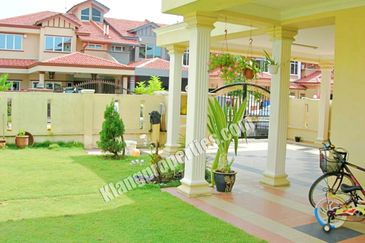
Bandar Botanic
Bandar Botanic/Bandar Bukit Tinggi, Selangor
RM 2,700
4 beds |
3 bath |
2600 sqft
RENT
FEATURED
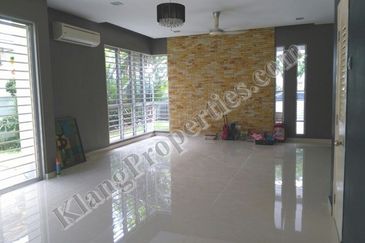
Bandar Botanic
Bandar Botanic/Bandar Bukit Tinggi, Selangor
RM 3,200
4 beds |
4 bath |
2600 sqft
SALE
FEATURED

The Parque Residence @ Eco Santuary
Telok Panglima Garang, Selangor
RM 850,000
3 beds |
2 bath |
1388 sqft
SALE
FEATURED
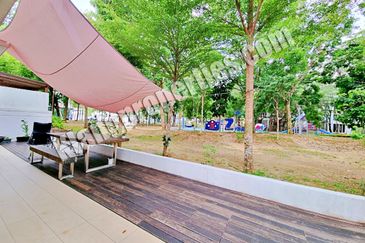
Ambang Botanic
Bandar Botanic/Bandar Bukit Tinggi, Selangor
RM 2,480,000
6 beds |
7 bath |
5450 sqft
SALE
FEATURED
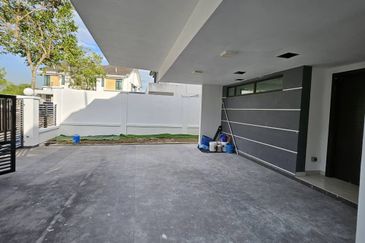
Horizon Hills @ Golf East
Horizon Hills, Johor
RM 1,480,000
4 beds |
6 bath |
3649 sqft
SALE
FEATURED

Bandar Botanic
Bandar Botanic/Bandar Bukit Tinggi, Selangor
RM 680,000
4 beds |
3 bath |
1600 sqft
SALE
FEATURED

Bandar Botanic
Bandar Botanic/Bandar Bukit Tinggi, Selangor
RM 980,000
4 beds |
4 bath |
2400 sqft
SALE
FEATURED

Bandar Botanic
Bandar Botanic/Bandar Bukit Tinggi, Selangor
RM 1,530,000
4 beds |
4 bath |
2800 sqft
SALE
FEATURED

Ambang Botanic
Bandar Botanic/Bandar Bukit Tinggi, Selangor
RM 1,150,000
4 beds |
4 bath |
2800 sqft
SALE
FEATURED

Ambang Botanic
Bandar Botanic/Bandar Bukit Tinggi, Selangor
RM 1,230,000
3 beds |
3 bath |
2600 sqft
SALE
FEATURED
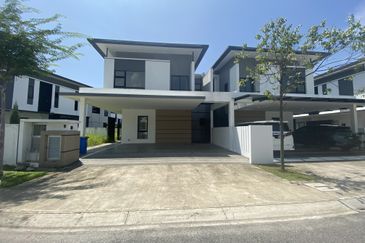
Cheria Residences, Tropicana Aman
Telok Panglima Garang, Selangor
RM 1,600,000
5 beds |
5 bath |
3700 sqft




